Fujifilm GFX100 II Review
Fujifilm GFX100 II Performance - How well does it take pictures?
Medium Format is all about image quality. The larger-than-full-frame 0.8X crop-factor image sensor is expected to translate into lower image noise at equal magnification and higher dynamic-range. This is essentially the only reason photographers accept bigger and heavier lenses, with all that those imply.
The ultimate output quality of any ILC depends on both the camera and lens. Fujifilm made sure this is overseen by announcing that all their GF-mount lenses are designed for a resolution of 100 MP, telling photographers that those lenses were ready for future-generation GFX system cameras. It did not take long to reach this future with the GFX100. While color, noise, contrast and exposure are properties of the camera, distortion, vignetting and chromatic aberrations are properties of the lens. Sharpness depends on the weakest link. So, the camera cannot capture more details than the lens lets through. Conversely, a lens can transmit a greater amount of details than the sensor can capture.
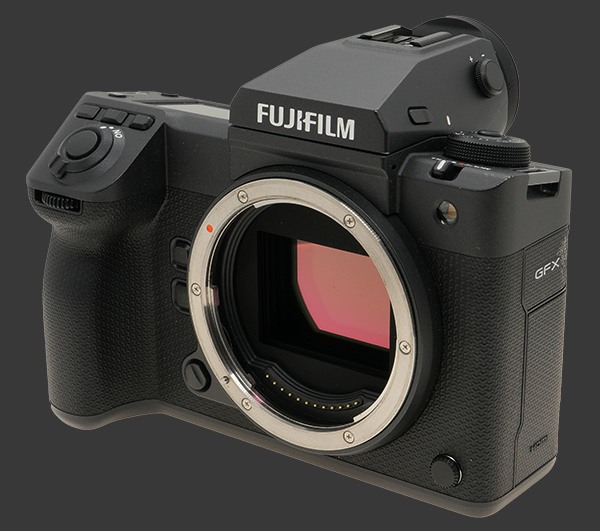
Sharpness & Image Noise
When the Fujifilm GFX 50R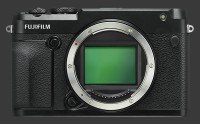
Fujifilm GFX 50R arrived with a large 50 megapixels sensor, it delivered unprecedented image-quality in terms of resolution and dynamic-range. Advancements in Full-Frame sensors reduced the gap but, yet again, Fujifilm leaped over everyone else with a 100 megapixels Medium-Format sensor.
Image quality of the Fujifilm GFX100 II is incomparable to any other save for its siblings. The level of detail captured by the 102 megapixels sensor is often too much! In some studio shots of still life, this camera rendered the dust precisely without even using a macro lens. It also managed to resolve the dots used to print the book covers used for comparing image-noise.
Between ISO 80 and 800, this camera captures imperceptible details. The expanded ISO 40 level offers the same noise-free output with a very slight smoothing of detail due to internal processing. The default Sharpness level is really good, while pushing it to +1 produces absolutely tack-sharp images without any visible artifacts. At these sensitivities. it is possible to print impeccable 60" x 45" prints and murals.
There is virtually no difference between ISO 800 and 1600. Tiny speckles of noise is apparent when seen at 100% magnification yet incredibly small details are still captured. Enormous prints up to murals are still possible at this level. At the pixel-level, equivalent to a 110" wide print on most monitors, one can see a hint of softness appear at ISO 3200. Images captured at this sensitivity still capture more detail than any other camera.
One thing that is truly outstanding is how slowly image-noise increases with this camera. ISO 6400 shows very minor degradation compared to ISO 3200. The finest detail become a little soft and the fine noise pattern is just slightly more apparent. The noise floor rises only enough to be detectable, so the GFX100 II still captures a broad dynamic-range at ISO 6400. Maximum print sizes diminishes by a few linear inches at most.
ISO 12800 is the first level where noise is apparent at 100% view. Still, the noise pattern is fine and details remain remarkably clear. Even at such high sensitivity, color and contrast stay very consistent. The camera still renders deep blacks, showing that dynamic-range is minimally affected. This further reduces print sizes compared to ISO 6400, yet only by a few more linear inches. It is still possible to print a beautiful poster-size print.
The last standard sensitivity, ISO 25600, is still very good considering the incredible resolution of this Medium-Format camera. The noise pattern is a little coarser and the edges of details start showing signs of damage. There is a slight drop in contrast and some colors start fading. More common large prints can still look nice.
Expanded sensitivities are rarely usable but the Fujifilm GFX100 II is clearly takes exception at ISO 51200. At that level, noise is obvious but still not very destructive. Images remain looking sharp only with some grain to them. Contrast is very good, while colors are slightly more muted than at ISO 25600. Expect common print sizes to appear quite reasonable. ISO 102400 shows coarse image noise that downs out fine details and turns blacks into dark grey. There is a surprising amount of contrast and colors are not too far off, making this sensitivity workable for some uses.

Dynamic-Range & Metering
Dynamic-range of the Fujifilm GFX100 II is nothing short of exceptional. This Medium Format mirrorless camera can easily handle over 14 stops of dynamic-range all the way to ISO 12800! Our systems cannot measure beyond 14 stops even, so there is no telling exactly how much it can capture. Images straight out of this digital camera have the look of HDR, even though they are made from a single exposure. The maximum dynamic-range it can record happens at ISO 320. Lower sensitivities all the way down to Expanded ISO 40 all still capture more than 14 stops.
From ISO 12800 upward, dynamic-range very gradually decreases, finally becoming measurable. ISO 25600 still captures 12 stops, by far the best high ISO performance of any camera reviewed here. An extra stop gets lost at ISO 51200 and more than one more at ISO 102400.Clearly this is where the larger pixels of Medium Format offer the most advantage.
There are three Dynamic-Range settings on the Fujifilm GFX100 II: 100%, 200% and 400%. These represent a normal capture, one with 1 full-stop more and one with 2 stops more than the default. 200% is available from ISO 200 and up, while 400% if available from ISO 320. Expanded ISO sensitivities are are locked at 100% Dynamic-Range. Unless shooting rather low-contrast subjects, simply setting Dynamic Range to 400% performs optimally, since the camera will simply use a lower setting when 400% is not available.
The GFX100 II offers independent control for Shadow and Highlight tone. These affect how dynamic-range is compressed when rendering JPEG images. The default tones are close to perfect. A half-point or full-point reduction in Highlight Tone can recover some highlight detail without making images look dull.
Metering of the GFX100 II is one of the best. The Multi-Segment metering system produces well-balanced exposures while minimizing clipping of highlights. It rarely over-exposes major areas. Only a slight negative Exposure-Compensation is needed to perfectly record highlights gradations in high-contrast scenes. Of course, given how much dynamic-range this Medium Format camera can capture, there are much fewer scenes that do not fit within its dynamic-range. This camera also offers simple Center-Weighed, Average and Spot metering modes, which all work exactly as expected.
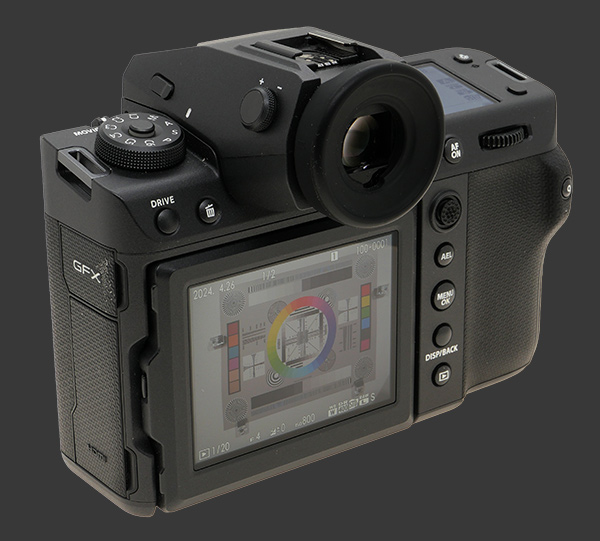
Color & White-Balance
Unsurprisingly for a company still named after their analog origins, Fujifilm expertly renders colors. The GFX100 II offers an impressive number of Film Simulation modes that vary in saturation, contrast and gradation. Still, hue is almost always close to reality with both Provia and Astia producing the most life-like colors. There is a tiny amount of extra red which is corrected by setting Color to -1.
The White-Balance system in the GFX100 II is reliable and highly consistent. In some cases of low artificial light, there is a slight blue tint using the default Auto WB mode but there are two more settings to prioritize whites or ambiance. Even mixed lighting is rendered really naturally.
Speed and Performance
This Medium-Format camera requires a huge amount of processing power and throughput to handle its 102 megapixels sensor. It manages to be responsive without feeling instantaneous since operations take fractionally longer. The GFX100 II clearly reacts to every input when pressed. Even very quick actions as just long enough to be noticed. This is most obvious when switching between Capture and Playback modes but is also perceptible as a lag when releasing the shutter.
The EVF and rear LCD preview the scene very smoothly and without lag. Even in low light, the viewfinder refresh rate remains fast. This and autofocus performance has improve tremendously since the launch of the original GFX 50S which uses a Contrast-Detect AF system. Now, the new GFX100 II incorporates on-sensor Phase-Detection. An undisclosed number of phase sensing elements are combined to create a virtual 425-Point Phase-Detect AF system.
The Fujifilm GFX100 II boasts a sophisticated autofocus system which initiates swiftly and is capable of tracking multiple subjects types across the frame. Practical autofocus performance is dependent on the system and the specific lenses. G-Mount lenses are necessarily large and some have to move large optical elements to focus. This creates a highly variable performance even among very recent lenses. With the GF20-35mm F/4R WR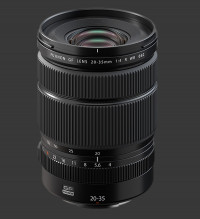
Fujifilm Fujinon GF20-35mm F/4R WR, that has a moderate F/4 maximum aperture, autofocus is fast. However, the newer GF55mm F/1.7R WR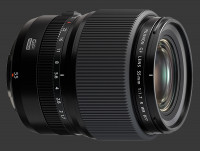
Fujifilm Fujinon GF55mm F/1.7R WR focuses undeniably sluggishly. So, while AF can take less than ¼s, it easily takes twice as long too.
Releasing the shutter incurs two delays that vary according to the selected hybrid shutter-mode. The first delay is the shutter-response which is shorter. That is the fraction of a second between pressing release passed the halfway point and the photo being taken. The second, longer delay is the shutter-return which causes a blackout until the camera is ready for the next photo.
- The shutter-response is slowest when using the mechanical shutter. One has time to feel the shutter move, even for a a very short exposure.
- When EFCS is enabled, the shutter-response is faster but still noticeable. In fully Electronic-Shutter mode, it is practically instant.
- The shutter-return is slow when the mechanical shutter is used, regardless if EFCS is enabled or not.
- Electronic shutter-return is fast but still noticeable with a visible blackout for a fraction of a second.
Essentially, all this confirms that the GFX100 II is not an action camera. Nobody expected it to be. With a large and heavy camera system, photos are taken more deliberately and frequently from a tripod. After all, sifting through thousands of 102 megapixels images is going to take a lot of time.
Performance of the Fujifilm GFX100 II is characterized by the following measurements:
- Power-On: 1¼s. Slightly slow.
- Power-On to First-Shot: 1½-2¼s, depending on lens. Average to slow.
- Autofocus: ¼ - 1s. Highly lens dependent. Fast to very slow.
- Shutter-lag: Less than ¼s yet noticeable with Electronic-Shutter. Just over ¼s with Mechanical-Shutter. Slow.
- Shot-to-shot: Just over ½s with a quick lens. Twice that with a slow one. Very good to below average.
- Playback: 1s to enter, ½s to exist. Below average. Reversed from the GFX 50S.
- Power-Off: Under 2s, including cleaning. Good.
- Video: Instant to record and stop. Excellent.
The overall performance of this camera is quite reasonable. Some aspects are faster than average, while others are slower. Unfortunately, the GFX100 II feels slow because it slips up on the two most important numbers, shutter lag and autofocus speed. This metrics are critical since they correspond to the moment when the photographer is waiting for the camera to capture a particular moment. The final metric is battery-life. Official specifications claim 540 shots-per-charge. Real world usage will result in fewer frames. An extra battery should get most photographers through a day.
Fujifilm GFX100 II Conclusion
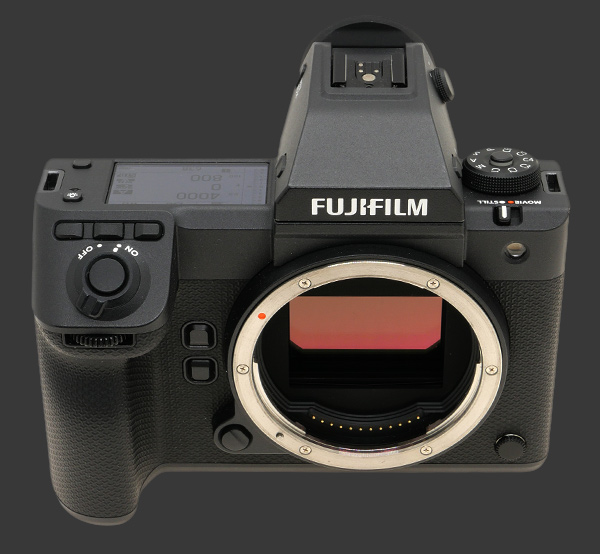
Often new cameras deliver an incremental update over their previous generations. This is not one of those times. From the impressive launch of the GFX Medium-Format Mirrorless Digital Camera platform with the initial 50 MP 44x33mm CMOS sensor, Fujifilm reached an entirely new level with the GFX100 II.
The Fujifilm GFX100 II is built around a newly-developed 102 megapixels BSI-CMOS II HS sensor mounted on a state-of-the-art 5-axis image-stabilization mechanism that delivers a best-in-class efficiency of 8-stops despite its huge size. The accompanying hybrid shutter provides an enormous exposure latitude and some impressive throughput with a fast 8 FPS drive mode capable of capturing 1000+ images per burst.
Image quality is absolutely spectacular. The 102 MP sensor records an unprecedented amount of detail and produces images with extremely low noise and an extremely wide dynamic-range. This camera can be used to make enormous prints and murals. Noise is exceptionally low and only gradually appears starting at ISO 3200, thus delivering usable images up to ISO 51200. The camera manages to keep a wide dynamic range, accurate colors and contrast until high sensitivities.
For the most part, the GFX100 II is fairly responsive, although its performance is much more variable than usual. Autofocus can be quite fast or slow, depending on the lens. The volume of data being processed is also causing some short yet noticeable shutter-lag, which is unfortunate yet not necessarily a problem for this type of camera. Photographers are most likely considering this camera for architecture and studio photography were fewer images are taken more deliberately.
This Medium-Format is efficient to use and highly customizable. It makes all essential controls easily accessible thanks to dual control-dials, an 8-way joystick and 10 customizable buttons. The removable viewfinder boasts a 9.4 MP 0.64" EVF showing 100% coverage at 1X magnification and features an Eye-Start Sensor. There is also a large backlight Status LCD that is very customizable, plus a large rear LCD too.
The premium professional digital camera is well built with a weatherproof and freezeproof body. The main two main downsides that restricts its use is a limited lens selection and bulk. Between the camera itself and necessarily large lenses to cover its Medium-Format imaging circle, the GFX system is certainly bulky. Choosing this camera really comes down to the need for extremely large prints and the practically of the GFX system.
 |
Please Support Neocamera
All information on Neocamera is provided free of charge yet running this website is a huge endeavor. Purchases made via affiliate links found throughout the site help keep it running and up-to-date. There is no additional cost to you, so please consider buying via these links to our affilates:
If you found any information on this site valuable and did not purchase via our affiliate links, please considering donating via PayPal:
Any amount will be greatly appreaciated. Thank you for your support!
Fujifilm GFX100 II Highlights
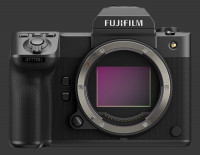
Sensor-Size: 44 x 33mm

Actual size when viewed at 100 DPI
| 102 Megapixels Mirrorless | ISO 40-102400 |
| Fujifilm G Mount 0.8X FLM | Shutter 1/32000-3600s |
| 5-Axis Built-in Stabilization, 8-Stop Improvement | Full manual controls, including Manual Focus |
| 0.64" Optional EVF 9.4 Megapixels (1.00X) | Custom white-balance with 2 axis fine-tuning |
| Automatic Eye-Start sensor | Spot-Metering |
| 2 Axis Digital Level | Hot-Shoe & Sync-Port |
| Weatherproof down to -10C | Stereo audio input |
| Built-in Dust Reduction | Lithium-Ion Battery |
| 8 FPS Drive, 1000 Images | CF Express Type B, Secure Digital Extended Capacity |
| 8192x4320 @ 24 FPS Video Recording | |
| 3.2" LCD 2.4 Megapixels |
Updates
2024.11.18

Best 2024 Photography Gifts for Every Budget
Great gifts for photographers and photo enthusiasts selected for every budget among the best products of 2024.
2024.08.07

Eye Protection Tips for Professional Photographers
The four main considerations for professional photographers regarding eyewear.
2024.07.14

Fujifilm X100VI Review
Flagship fixed-lens compact digital camera with a 40 MP sensor and Image-Stabilization, a first for the series. Retro design featuring dual control-dials, plus direct ISO, Shutter-Speed and EC dials. Its hybrid viewfinder can switch between EVF and OVF mode.
2024.05.09

Fujifilm GFX100 II Review
Flagship 102 Megapixels Medium-Format Mirrorless Digital Camera with 8-Stop 5-Axis IBIS, 8 FPS Drive, 8K Video and 400 MP Super-Resolution capture in a weatherproof and freezeproof body with dual control-dials and dual memory-card slots.
2024.04.03

Fujifilm X-T5 Review
Newest Fujifilm flagship boasting a 40 MP APS-C sensor, 5-axis IBIS with 7-stop efficiency, 15 FPS continuous drive, 6.2K Video capture, dual control-dials and dual SDXC UHS-II slots in a sturdy weatherproof and freezeproof body.
2023.11.20

Best Digital Cameras of 2023
Find out which are the Best Digital Cameras of 2023. All the new Mirrorless Digital Cameras from entry-level to high-end professional.
2023.07.10

Fujifilm X-H2 Review
40 Megapixels APS-C Hybrid Mirrorless Digital Camera with 7-stop IBIS. Fastest shutter ever and 8K video capture. Large builtin EVF with 0.8X magnification and 5.8 MP, plus an Eye-Start Sensor. Packed with features and large number of controls in a weatherproof and freezeproof body.
2023.05.07

Sony FE 20-70mm F/4G Review
Review of the unique Sony FE 20-70mm F/4G lens. The optical zoom of this lens spans ultra-wide-angle and medium focal-length coverage, making it one of the most versatile Full-Frame lenses on the market.
2023.01.15

Huion Inspiroy Dial 2 Review
Review of the Huion Inspiroy Dial 2 tablet, a medium sized drawing surface with dual dials and customizable buttons. Connects via USB-C or Bluetooth 5.0 with Windows, Linux and Android support.
2022.12.08

How to Pack for a Photo Trip
Find out how to pack for a travel photography trip, carry your gear safely while meeting airline regulations.
2022.11.13

Best Digital Cameras of 2022
The best digital cameras of 2022. A short list of the most outstanding models in their respective categories. Choose one for yourself or as a gift.
2022.09.21

Pentax DA* 60-250mm F/4 SDM Review
Review of the Pentax DA* 60-250mm F/4 SDM, the constant-aperture telephoto zoom with the highest zoom-ratio on the market.













